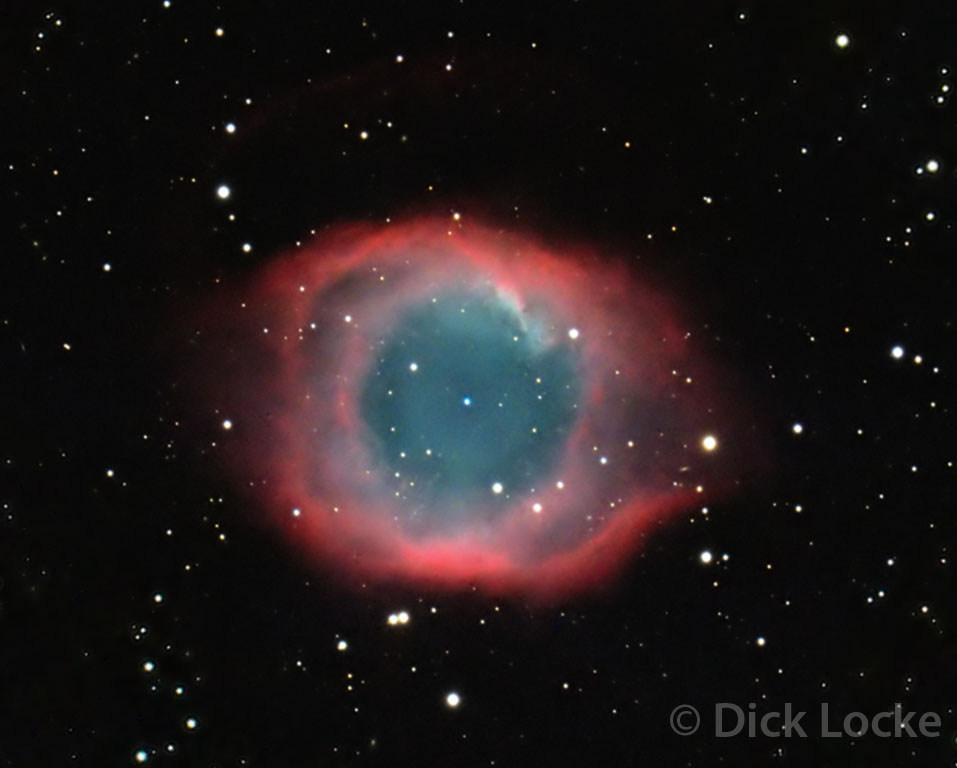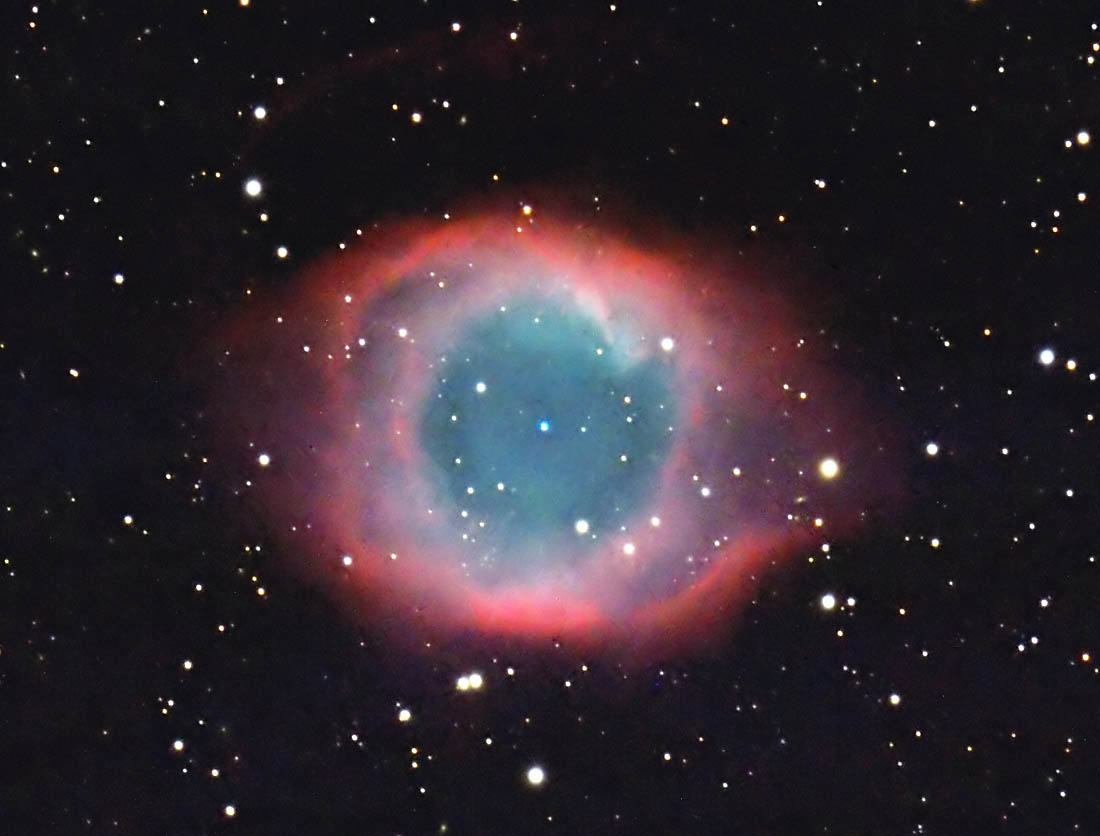
Helix Nebula 6 Hour Blend

The Helix nebula is also known as "The Eye of God" as well as "The Sunflower Nebula" and it's seen in the Big Bang Theory. The Helix is a Planetary Nebula and is designated as NGC7293 (NGC 7293). "The Helix Nebula is one of the closest of all planetary nebulae: Lying at a distance of perhaps 450 light years..." said SEDS back in the day. They're "aged" stars that puff off their outer layers at some point. Wikipedia info is here.
This object is dim and challenging to image, and it's even more difficult in that it only rises to about 40 degrees above the horizon at it's highest point. (That means it's less than halfway between the horizon & straight up, for the math-challenged!) This consists of 15 * 5 minute frames from 2016 and 71 * 4 minute frames from 2006 and 2007. The latest frames are dated 9/28/2016 from Starry Nights in the Texas Hill Country. Nikon D810A camera, ISO 400, Takahashi TOA 130 (a 5" APO refractor) with the new reducer at 700mm and f5.4, and Astro-Physics AP 900GTO mount. I used my DSLR Workflow.
The new frames greatly helped in smoothing out the noisier image from 8+ years ago, below.

The above is a 54 frame image from the HAS site, Sept. 14-17, 2007. It was "runner up" in the Yahoo Group digital_astro in the September 2007 challenge.
Want info on what a planetary nebula is? This page is good. All the pictures from this trip are here.
Image details. Only 54 x 4 = 216 minutes (3.6 hours) total exposures 9/2007 at the HAS site near Columbus. Canon EOS 20Da (unmodified), Takahashi TOA 130 (a 5" APO refractor) with Tak flattener, and Astro-Physics AP 900GTO mount. My current image processing workflow is here.
Astronomy Pictures: Dick Locke's Astrophoto Gateway page....
Copyright © 2007 Dick Locke. All Rights Reserved.
Contact and Image Use Information